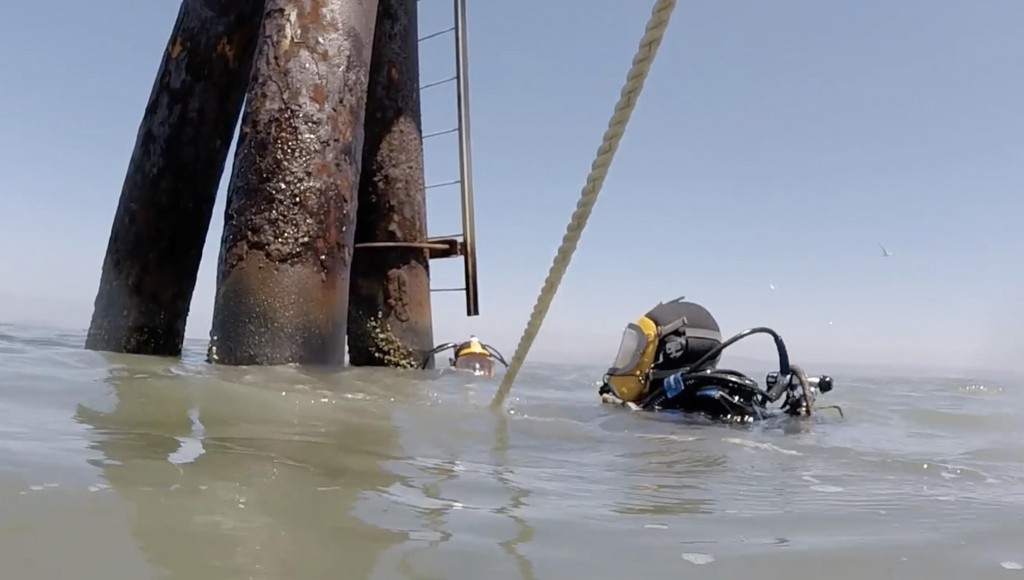by Ariel Rubissow Okamoto
When John Kucklick talks about interrogation techniques, his subjects aren’t tight-lipped terrorists, they’re bits of blubber. Harbor seal fat is a well-known repository of legacy contaminants from the Bay like PCBs, flame retardants and DDT, but the Regional Monitoring Program for Water Quality in San Francisco Bay (RMP) wanted to know what they might be missing. In 2010, they asked Kucklick, a scientist with access to a national database of 330,000 chemicals and some pretty cutting edge software, to check their blubber for unknowns.
We wanted to spot any troublesome chemicals before they harm our wildlife,” says Rebecca Sutton, a senior scientist with the San Francisco Estuary Institute. The test compared San Francisco Bay seal blubber with blubber from Alaska (samples taken only from dead seals or tissue banks), and South Bay mussels with samples from more pristine Bodega Bay, looking for “CECs,” contaminants of emerging concern that aren’t currently monitored. “The good news is that no surprising new bad actors turned up. This means we don’t have to pivot and run after a whole new set of chemicals we didn’t expect,” says Sutton.

Kucklick “interrogated” the samples, to use his term, looking among thousands of chemicals for those that both last a long time in the environment and build up in the food web and fatty tissues. “Most of the chemistry we do involves looking for X, Y, or Z on an EPA list of chemicals of concern, and most of the time we’re using detection methods that have been specifically developed for those chemicals. In this exercise, however, we wanted to look at samples in a very open-ended way,” he says.
For this project, Kucklick, an investigator for the National Institute of Standards and Technology, conducted a non-targeted scan using two-dimensional gas chromatography and time of flight mass spectrometry to look for thousands of chemical fingerprints. “Gas chromatography is like when you put black ink on a napkin and add water, all the colors go to their corners,” he explains. “Some compounds separate out into signals, like different shades of grey.”
The second part of the interrogation, time of flight mass spectrometry, passes chemicals through something similar to a light bulb filament so they break up into pieces, creating molecular fragments of different weights with telltale fingerprints. “Your ability to detect stuff is only as good as your library and how cooperative chemicals are with the technique you are using,” he says.
While the RMP may not need to go so far as water-boarding blubber to get cooperation, the next step will involve a certain susceptibility to water. Sutton wants to see similar open-ended analysis applied to water-soluble, rather than just fat-soluble, products. “Many of our personal care products, and cleaning and detergent products, produce water soluble compounds that may not be removed by wastewater treatment. A good next step would be to scan for those,” she says.

A few interesting things did turn up in the first scan, however. Bay mussel and harbor seal samples did contain five contaminants not previously identified in wildlife, and for which toxicity is largely unknown. Some of these derive from dyes, coatings, plastics and combustion processes. The scan also found a number of unusual DDT breakdown products, as well as some naturally forming brominated compounds that probably originate from small organisms in the ocean. “Relative to what we know is already in seal fat, the new stuff is at very low levels and in small quantities,” says Kucklick. “The good news is we didn’t find anything like a whole new class of PCB-like chemicals.”
Sutton adds: “This exercise reminds us that the original or parent contaminants may not always be the most important chemicals to monitor in wildlife.”
Beyond the blubber, the mussel tissue scans found derivatives of amphetamines (a sign, perhaps, of increasing illicit drug use) and antibacterials (such as a methylated form of triclosan used in hand soaps). Mussels filter directly from the water column, offering a different picture of contaminants in the food web, and of what’s being pumped into the Bay with treated human wastewater.
“People are exposed to chemicals like crazy, but we don’t accumulate most of them because they pass through our systems and we excrete them,” says Kucklick. “That doesn’t mean they aren’t bad for us, or for seals, or for the environment. The next phase would be to look at what’s not in the fat.”
Broad Scan for Bay Contaminants
CONTACT: John Kucklick; Rebecca Sutton